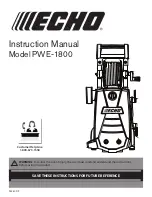
10
GB
Detergents and laundry
Detergent dispenser drawer
Good washing results also depend on the correct dose of
detergent: adding too much detergent won’t necessarily
make for a more efficient wash, and may in fact cause
build up on the interior of your appliance and even pollute
the environment.
!
Do not use hand washing detergents because these
create too much foam.
!
Use powder detergent for white cotton garments, for pre-
washing, and for washing at temperatures over 60°C.
!
Follow the instructions given on the detergent packaging.
Open up the detergent
dispenser and pour in the
detergent and fabric softe-
ner, as follows.
compartment 1: Do not pour detergent into this
compartment.
compartment 2: Detergent for the wash cycle
(powder or liquid)
It is recommended that you place liquid detergent directly
into the compartment using the appropriate dosing cup.
compartment 3: Additives (softener, etc.)
When pouring the softener in compartment
3
, avoid excee-
ding the “max” level indicated.
The softener is added automatically into the machine during
the last wash. At the end of the wash programme, some
water will be left in compartment
3
. This is used for the inlet
of denser fabric softeners into the machine, i.e. to dilute the
more concentrated softeners. Should more than a normal
amount of water remain in compartment
3
, this means the
emptying device is blocked. For cleaning instructions, see
“Care and maintenance”
.
compartment 4: Bleach
Bleach cycle
Bleaching may only be performed in conjunction with wash
cycles
1, 2, 3, 4, 8,
.
Pour the bleach into compartment
4
; pour the detergent and
softener into the corresponding compartments, then select
one of the abovementioned wash cycles.
This option is recommended only for very soiled cotton
garments.
Preparing the laundry
• Divide the laundry according to:
- the type of fabric/the symbol on the label
- the colours: separate coloured garments from whites.
• Empty all garment pockets and check the buttons.
• Do not exceed the values listed in the “Table of wash
cycles”, which refer to the weight of the laundry when dry.
How much does your laundry weigh?
1 sheet 400-500 g
1 pillow case 150-200 g
1 tablecloth 400-500 g
1 bathrobe 900-1200 g
1 towel 150-250 g
Garments requiring special care
Shirts:
use special wash cycle
7
to wash shirts in various
fabrics and colours.
It guarantees maximum care is taken of the garments and
minimises the formation of creases.
Silk:
use special wash cycle
8
to wash all silk garments.
We recommend the use of special detergent which has
been designed to wash delicate clothes.
Curtains:
fold curtains and place them in a pillow case or
mesh bag. Use wash cycle
8
.
Wool:
The wool wash cycle on this Hotpoint-Ariston machine
has been tested and approved by The Woolmark Company
for washing wool garments labelled as hand washable
provided that the garments are washed according to the
instructions on the garment label and those issued by the
manufacturer of this washing machine. Hotpoint-Ariston
is the first washing machine brand to be approved by The
Woolmark Company for Apparel Care- Platinum for its wa-
shing performance and consumption of energy and water.
In UK, Eire, Hong Kong and India the Woolmark trade mark
is a Certification trade mark.
Load balancing system
Before every spin cycle, to avoid excessive vibrations and
to distribute the load in a uniform manner, the drum rotates
continuously at a speed which is slightly greater than the
washing rotation speed. If, after several attempts, the load
is not balanced correctly, the machine spins at a reduced
spin speed. If the load is excessively unbalanced, the
washing machine performs the distribution process instead
of spinning. To encourage improved load distribution and
balance, we recommend small and large garments are
mixed in the load.











































